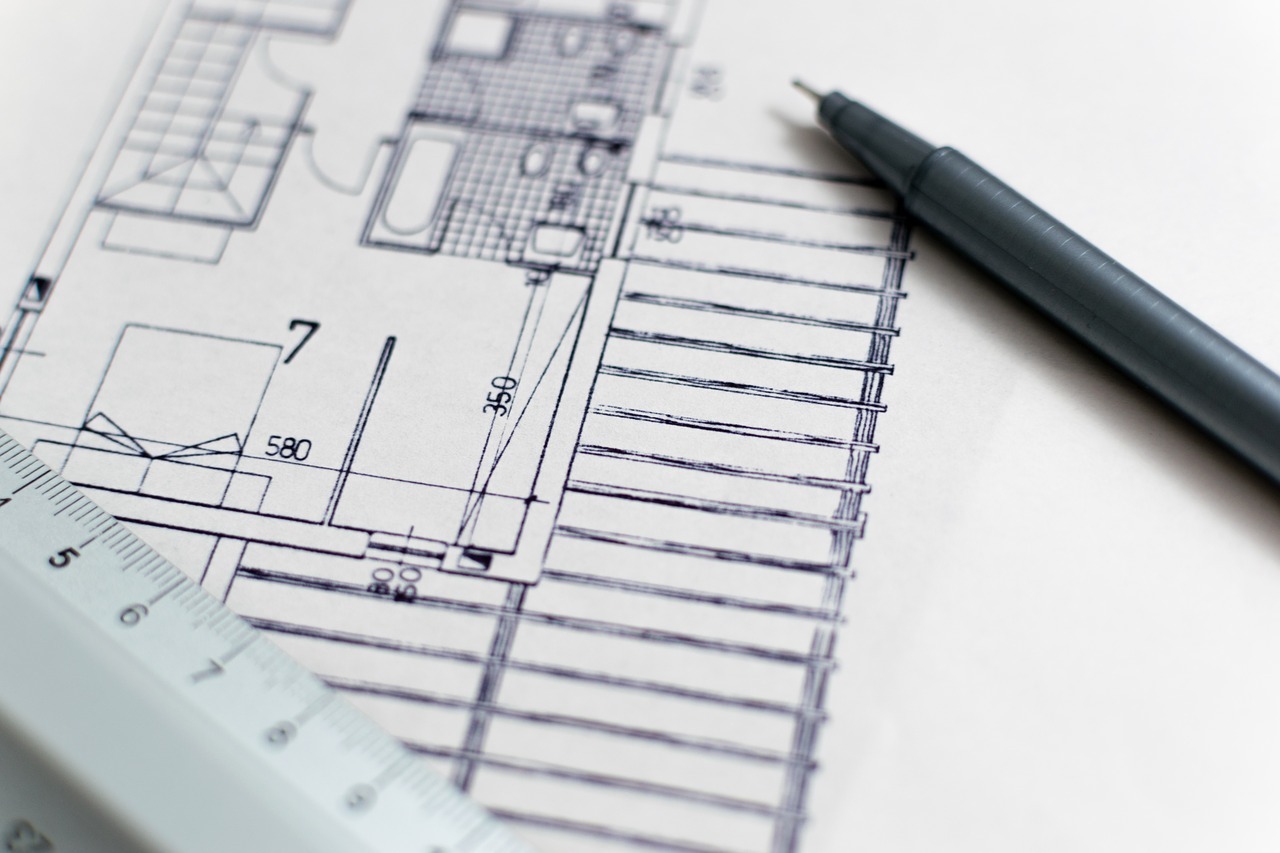Going from Homeowner to Home Seller
The following post was written by Kathryn Madison, a real estate broker out of the Windermere Portland-Raleigh Hills office. You can learn more about Kathryn and read more insightful articles on her blog, GoBeyondtheOrdinary.com.
How do we transition from the mindset of a homeowner to a home seller? Homes bring us shelter, comfort and are a place to express our individuality. But when it’s time to move on, that same home will now be the financial springboard to the next chapter in our lives.
We start by letting go of the home layer by layer.
Both buyer and seller benefit when the seller- perhaps with some judicious coaching from their skilled Realtor- peels away those things that made their home uniquely theirs. In essence, the serious packing begins once the decision has been made to sell; bookcases and closets should only suggest their function with a few items, rather than store seasons and years worth of books and clothes. Carefully removing prized collections and family photos is also vital- nothing should distract the buyer from seeing the house, and seeing themselves in it.
Personal colors are just as important to remove as objects. After all, if you were serving ice cream to a few thousand people (that’s how many will see your house photographed online)- would you serve them mango flavor? It’s a lot more likely you would choose vanilla- and that’s pretty much what the color of your walls should be- neutral or deep neutral tones.
The last touch is a good deep cleaning- ask your REALTORtm if they have the name of a reputable company.
The seller can then replace those familiar objects with a fresh new welcome mat at the front door.
This process allows the buyer the visual and emotional space to move in.
This process allows the seller to move on.
Posted in Selling by Windermere Guest Author
Sort and Save Your Vision of Home

When I first moved into my new place, I was naively excited for making it exactly the way I wanted…immediately. New paint, new furniture and all of it would be so stylish. Then I realized I have a mortgage payment due soon and even though I want a new chair, I need to buy groceries.
Lately, I’ve been channeling my energy to shop for new furniture and decor on a few websites that let you find, save and share your favorite items from across the web in one place. You can even group your saved items by each room to keep things really organized. Each of these sites also have fun community features and giveaways so it may be personal preference which one you like best. I recommend:
-
 Kaboodle.com – in addition to saving your favorites, the styleboards feature lets you drag and drop items onto a digital bulletin board (like the example shown here).
Kaboodle.com – in addition to saving your favorites, the styleboards feature lets you drag and drop items onto a digital bulletin board (like the example shown here).
-
- Stylehive.com – fabulous for the fashionistas out there.
-
- Thisnext.com – a very clean and simple interface makes this site easy to use.
Bonus: sort and save inspiration by room
On Houzz.com you can create and save “ideabooks” of various rooms around your home. Ideabooks are basically photo slideshows featuring inspiring interior design images added all the time by users. Ideabooks often have fun themes like “Feeling (wonderfully) Blue” and “Get Your Outdoor Party On.” You can look through other users’ ideabooks and save their photos to create your own.
How do you create your vision?
Post written by Katherine Garsi
Questions to Ask Your Home Inspector
To get a quality home inspection, ask the right questions before you put your inspector to work. Here are some of the basics.
What does your inspection cover?
Insist that you get it in writing. Then make sure that it’s in compliance with state requirements and includes the items you want inspected.
How long have you been in business?
Ask for referrals, especially with newer inspectors.
<!–more–>Are you experienced in residential inspections?
Residential inspection is a unique discipline with specific challenges.
Do you do repairs or make improvements based on the inspection?
Some states and/or professional associations allow the inspector to perform repair work on problems uncovered in an inspection. If you’re considering engaging your inspector to do repairs, be sure to get referrals.
How long will the inspection take?
A typical single-family dwelling takes two to three hours.
How much will it cost?
Costs can vary depending upon a variety of things, such as the square footage, age and foundation of the house.
What type of report will you provide and when will I get it?
Ask to see samples to make sure you understand his reporting style. Also make sure the timeline works for you.
Can I be there for the inspection?
This could be a valuable learning opportunity. If your inspector refuses, this should raise a red flag.
Are you a member of a professional home inspector association? What other credentials do you hold?
Ask to see their membership ID; it’s some assurance.
Do you keep your skills up-to-date through continuing education?
An inspector’s interest in continuing education shows a genuine commitment to performing at the highest level. It’s especially important with older homes or homes with unique elements.
Any other good questions to ask? Post yours now!
Windermere Colorado Posted in Blog, For Buyers & Sellers Tagged #buyers, #homeinspection, #windermere
Staging Your Home – Pink Flamingos Not Included

It can sometimes be tough to hear an agent asking you to hide your prize possessions when preparing your home for sale. I overheard two agents giving each other advice about how to politely help their sellers relocate their pink flamingo display and car collection off the front yard before putting the homes on the market.
Studies indicate that buyers decide if they’re interested within the first 30 seconds  of entering a home. You get one chance to make a first impression.
of entering a home. You get one chance to make a first impression.
Make sure your house looks attractive, well maintained and move-in ready at a glance. Before you put out your “for sale” sign, put these tasks on your to do list.
• Get your yard in shape—Mow the lawn, trim the hedges, haul away debris, sweep the walk, porches and patio, and consider adding some potted plants or hanging baskets for a touch of color.
• Keep it clean—Make sure your house can pass the white-glove test. Polish windows and scrub bathrooms, appliances, counters and floors until they gleam. Vacuum carpets, rugs, drapes and upholstery. Dust shelves, floorboards and molding.
• Give it a fresh coat—Paint the front door, walls leading to entrances, ceiling stains, cracks, chipped or damaged areas. A little paint goes a long way to improve the look of your home.
• Just fix it—Repair anything that needs it, including broken doorbells, torn screens, leaky faucets, broken deck railings or banisters, damaged floor tiles or doors that don’t close properly.
• Lose the chaos—Organize your rooms, closets and basement—anywhere a prospective buyer is likely to look. And don’t forget to remove pets and litter boxes.
• Set the stage—Help prospective buyers imagine life in your house. Remove excess furniture and rearrange what remains so that rooms look spacious and welcoming. Light scented candles, play soft music, add flowers here and there, you might even bake cookies.
• Hire a pro—Don’t have time to get your house ready to show? Turn to a realtor with an ASP® (Accredited Staging Professional) designation to stage your house professionally.
Windermere Colorado Posted in Blog, Denver Real Estate Market, For Sellers Tagged #sellers, #stagetosell, #windermere
Top 5 Words of Advice for a Seller Today
As a seller today you are faced with a challenge when it comes to selling your home for a fair price and getting it done in a reasonable amount of time. Even though inventory is lower than it was five months ago, we are still looking at about 9 months of inventory in many areas. This large amount of inventory indicates there is a lot of competition out there to attract the right buyer.
We all know there are more than five steps involved when it comes to selling your home. We asked a few of our Windermere agents what advice they would give a seller today if selling your home came down to just five key things.
Top five by Liz Talley Windermere Ballard
-
- Declutter.
-
- Refresh the garden.
-
- Clear the entry and front porch.
-
- Minimalize & depersonalize.
-
- Price it a wee bit under the competition so that it pulls in buyers.
As always, market presence, professional photos, etc. all make an enormous difference but these five steps are the key right now.
Top five by Jamie Johnson Windermere Camano Island
-
- Price. Listen to your real estate expert and don’t try to “start high.”
-
- Clean and stage. You are competing with other great deals out there. Yours needs to stand out and shine.
-
- Follow a marketing plan. Drop your price 3% every 30 days.
-
- Ask yourself – what is your goal? Most sellers have a dream of making a lot of money off the sale of their home. If your goal is to purchase another home, you will make up for your loss” there. It’s all relative.
-
- Hire a local expert. Interview at least three agents. Do your research. A good agent will do all that for you.
8 Ways to Make the Most of the Home You Have

“Staying Put” by architect and writer Duo Dickinson is not your typical architect’s book about design. There’s no obscure language nor design-for-design’s-sake ideas. It is a practical, down-to-earth guide that walks anyone through the rational process of how to remodel your house to get the home you want, from how to think about your house and overcoming hurdles to a list of “Duo’s Do’s and Don’ts” for the homeowner. Along the way, there’s plenty of nice before-and-after photos to help explain the points. Do read the book. You’ll be glad you did.
Read on for eight of Dickinson’s brightest suggestions:
Consider the compass points. The tips and illustrated examples are wonderfully straightforward. For example, we see a house that gets overheated, the siding degrades and the front door bakes in the sun because it all faces south.
Dickinson’s common-sense advice: Rework the front of the house with a new wide porch that shades the front door and some smaller, yet well-sized windows to create a lot more curb appeal while reducing maintenance and energy consumption. It’s a triple win: more beauty and comfort with less cost.
Avoid gutters. Statements such as “gutters and leaders are devout to be avoided” may sound like heresy to many, but certainly are the truth. Proving his point, Dickinson illustrates how a properly-built roof overhang can shed all the water it must without the complications, such as ice dams, caused by gutters.
Embrace small moves. Dickinson provides a wealth of simple solutions illustrated with before-and-after photos. He shows how to use small moves for big dividends, such as taking out a wall between a kitchen and a hallway to make room for more kitchen storage.
Enhance curb appeal. The book offers solutions to common problems with a particular style, such as how to improve and enhance an entrance into a split-level home.
Open up to the outside. Dickinson provides some excellent examples of how we can use modern windows and doors to strengthen the connection between inside and outside. Our homes, says Dickinson, no longer need be “later-day caves.”
Find your home. Learning more about the style of the house you have will help you avoid obstacles in remodeling and recognize the best opportunities for improving your particular home.
Open up the inside. Snippets of advice sprinkled throughout the book are like refreshing raindrops that clear the cobwebs away. One such snippet: “If you walk through a room to get to a room, something is wrong.” You know — it’s when that new great room gets added onto a modest house, and the result is some kind of dyslexic creature that’s really two houses rather than one.
So rather than even building an addition, Dickinson suggests you make the most of what you already have. In this example, widening the opening between rooms strengthens this room’s connection with the rest of the home, increasing its utility and spaciousness.
Work with what you’ve got (before): Keeping the kitchen size the same while vaulting the ceiling dramatically increases the overall spaciousness of the room, as you’ll see in the next photo.
Work with what you’ve got (after): Walls, doors, appliances, and even the skylight and kitchen sink were all left where they were. This all avoided costly plumbing, electrical and mechanical work and rework.
Working with what you’ve got (plans): Dickinson has included before-and-after floor plans for many of the examples. These plans help provide that much more context, allowing the reader to better understand what they may be able to do with the home they already have.
By Bud Dietrich AIA
Tips for Moving into a Smaller Home as a Senior

By Michael Longsdon
For many seniors, there comes a time when the expense and upkeep of a big home no longer seem realistic. All of your kids have moved out, and suddenly, your multi-bedroom house feels excessively large and empty. Plus, it may be difficult to keep up with mortgage payments if you’re expecting a lower income during retirement. Whether downsizing is a financial necessity or an emotional decision, here’s how to tackle the process without getting overwhelmed.
Do Online Research
Before you start looking at houses in person, narrow down your options by doing some research online. Search the local housing market on sites such as Redfin to get a feel for house prices in your desired area. For example, homes in Seattle, Washington have sold for an average of $685,000during the past month. Explore listings in your preferred size range and location so you can come up with a realistic budget for your new home.
Think far ahead as you look at homes, considering the possibility that the needs of you and your spouse may change over time. One-story homes can be much more accessible for you and your friends down the line. You should also take time to research the neighborhood and pay attention to the house’s proximity to grocery stores, leisure centers, and public transportation.
Plan for Your Storage Needs
If you’re moving to an apartment or condo, you may not have the attic, basement, or even the closet space that you’re used to. Look for a nearby for an affordable self-storage unit so you aren’t left crowding boxes and furniture into your new home. Some simple online research can help you find the best deals in your area. In the last 180 days, for instance, self-storage units in Seattle, Washington cost an average of $88.45 per month.
Go Through Your Possessions Methodically
One of the hardest parts about downsizing is getting rid of things you’ve had for decades. Apartment Guide recommends looking at pictures of clutter-free rooms in magazines for inspiration before starting your own purge. This will mentally prepare you for getting rid of all the stuff you don’t need cluttering up your new, smaller space.
As you declutter, go room by room and sort items into no more than five piles: keep, donate, sell, gift, and throw away. Don’t be afraid to let go of things that are useful but not particularly necessary in your own life. Likewise, don’t keep things out of obligation or feelings of guilt. While you’re cutting the clutter, keep a floor plan of your new home nearby so you can plan out your rooms and ensure your furniture will fit. If you’re worried about accurately measuring your space, you can hire a professional to help you out.
Pack Like a Pro
Protect your items during your move and make them easier to unpack later by trying out some expert packing tips. For example, socks make great padding for glasses and mugs, while oven mitts are perfect for transporting knives a little more safely. Secure entire desk drawers and kitchen storage trays with plastic wrap for much faster unpacking later. Also, keep your clothing on hangers and simply slip a garbage bag over them for protection. Remember to pack an essentials box of everything you need during your first day and night in your new house.
Follow a Moving Checklist
There is a lot to remember to do before moving day. For example, you need to update your mailing address with the post office, find a new doctor, and transfer your utilities. Follow a moving checklist (or hire a senior move manager for around $316 per day) to avoid forgetting important tasks. One of your moving tasks should involve researching moving companies at least two months before your move. This gives you plenty of time to find the help you need within your budget. Learn about how to spot rogue moving companies so you can avoid being scammed, especially if you’re moving long distance.
Moving is exhausting for anyone. But moving into a smaller home can be especially emotional as you say goodbye to personal objects that have surrounded you for much of your life. For this reason, it’s important to take things slow while you sort through your possessions and search for the perfect place to spend your golden years.
Mr. Longsdon provides advice to seniors on downsizing and aging in place and can discuss concerns like tackling home accessibility modifications, how to find a great contractor, the benefits of aging in place, and more.
What’s in a Condo? The In-Between Style of Home that Might be the Right Fit for You
Condominium homes are a great, low-maintenance choice for a primary residence, second home, or investment property. This alternative to the traditional single-family home has unique issues to consider before buying, as well as unique benefits. Here’s some background information to help you decide whether purchasing a condo is a good match for you.
Increasingly, condos are not just for first-time homebuyers looking for a less expensive entry into the housing market. Empty-nesters and retirees are happy to give up mowing the lawn and painting the house. Busy professionals can experience luxury living knowing their home is safe and well-maintained while they are away on business. If you are considering buying a condominium for a home, here are a few things you should know:
Condominium basics:
With condominiums, you own everything in your unit on your side of the walls. Individual owners hold title to the condominium unit only, not the land beneath the unit. All owners share title to the common areas: the grounds, lobby, halls, parking areas and other amenities. A homeowners’ association (HOA) usually manages the complex and collects a monthly fee from all condominium owners to pay for the operation and maintenance of the property. These fees may include such items as insurance, landscape, and grounds upkeep, pool maintenance, security, and administrative costs.
The owners of the units in a condominium are all automatic members of the condo association. The association is run by a volunteer Board of Directors, who manage the operations and upkeep of the property. A professional management company may also be involved in assisting the board in their decisions. The condo association also administers rules and regulations designed to ensure safety and maintain the value of your investment. Examples include whether or not pets are allowed and the hours of use for condominium facilities, such as pools and work-out rooms. Should a major expense occur, all owners are responsible for paying their fair share of the expense.
The pros and cons of condominium living:
The condominium lifestyle has many benefits, but condominium ownership isn’t for everyone. Part of it depends on your lifestyle. Condominium living may not be optimum for large families with active kids. The other factor is personal style. By necessity, condominium associations have a number of standardized rules. You need to decide whether these regulations work for you or not. Here are some points to keep in mind if you’re considering condominium living.
Cost: Condominium homes typically cost less than houses, so they’re a great choice for first-time buyers. However, because condominiums are concentrated in more expensive locations, and sizes are generally smaller than a comparable single-family home, the price per square foot for a condominium is usually higher.
Convenience: People who love living in condominiums always cite the convenience factor. It’s nice to have someone else take care of landscaping, upkeep, and security. Condominium homes are often located in urban areas where restaurants, groceries, and entertainment are just a short walk away.
Luxury amenities: May condominiums offer an array of amenities that the majority of homeowners couldn’t afford on their own, such as fitness centers, clubhouses, wine cellars, roof-top decks, and swimming pools. Lobbies of upscale condominiums can rival those of four-star hotels, making a great impression on residents.
Privacy: Since you share common walls and floors with other condominium owners, there is less privacy than what you’d expect in a single-family home. While condominiums are built with noise abatement features, you may still occasionally hear the sound of your neighbors.
Space: With the exception of very high-end units, condominiums are generally smaller than single-family homes. That means less storage space and often, smaller rooms. The patios and balconies of individual units are usually much smaller as well.
Autonomy: As a condominium owner, you are required to follow the laws of the associations. That means giving up a certain about of control and getting involved in the group decision-making process. Laws vary greatly from property to property, and some people may find certain rules too restrictive. If you long to paint your front door red or decorate your deck with tiki lanterns, condominium living might not be for you.
Things to consider when you decide to buy:
Condominium homes vary from intimate studios to eclectic lofts and luxury penthouses. The right condominium is the one that best fits your lifestyle. Here are a few questions to ask to determine which condominium is right for you.
How will you use it?
Will your condominium be your primary residence? A second home? An investment property? While a studio may be too small for a primary residence, it might be a perfect beachfront getaway. Also, consider how your lifestyle may change over the next five to seven years. If you are close to retirement, you may want to have the option of turning a vacation condominium into your permanent home.
Where would you like to live?
Some people love the excitement and sophistication of urban living. Others dream of skiing every weekend. Whether it’s the sound of the surf or the lure of the golf course, a condominium home affords you the ability to live a carefree lifestyle in virtually any setting.
What amenities are most important to you?
The variety of condominium amenities increases each year. Decide what you want, and you can be assured of finding it. Most urban and resort condominiums have an enticing array of extras, from spas to movie screening rooms to tennis courts.
What are your specific needs?
Do you have a pet? Some associations don’t allow them; others have limitations on their size. Parking can be a major issue, especially in dense, urban areas. How many spaces do you get per unit? Do you pay extra if you have more vehicles?
Finally, once you’ve found a property you like, examine the association’s declaration, rules, and bylaws to make sure they fit your needs. The association will provide you with an outline of their monthly fees and exactly what they cover so you can accurately budget your expenses.
Review the association board’s meeting minutes from the past year to get an idea of any issues the association is working on. An analysis of sales demand and property appreciation compared to like units may help ensure that you make the best possible investment.
Windermere Colorado Posted in Blog, For Buyers & Sellers Tagged #condolife, amenities, Condo, condo living
Making Your House a Home: Best Ideas for Home Resolutions

 Your home is a reflection of your tastes, your lifestyle and your ambition, and many of us are regularly transforming our homes one way or another to fit our adjusting needs. Whether it is refreshing a room to fit your style, reorganizing a closet to accommodate the holiday excess, going green to save the planet and a couple of bucks or a complete renovation of your kitchen- homes take maintenance. Some projects come about on a whim, but if you have any plans to make your nest nestier here are some ideas for not getting too overwhelmed by the process- no matter how large or small the changes you want to make:
Your home is a reflection of your tastes, your lifestyle and your ambition, and many of us are regularly transforming our homes one way or another to fit our adjusting needs. Whether it is refreshing a room to fit your style, reorganizing a closet to accommodate the holiday excess, going green to save the planet and a couple of bucks or a complete renovation of your kitchen- homes take maintenance. Some projects come about on a whim, but if you have any plans to make your nest nestier here are some ideas for not getting too overwhelmed by the process- no matter how large or small the changes you want to make:
Get Organized: Whether it is your closets, books, pantry or your entire basement identifying the problem is the first step. Once you know where to focus your energy think about the purpose your space should fulfill, what you want it to look like and how you can keep it organized for the long-term. Sometimes getting organized is a matter of doing a little bit every day, or it is finding the right storage solution. Once you know what the problem is you can identify your steps, timeline and budget. Ultimately, getting rid of the clutter and holding onto items you love the most and use will keep your spaces easy to manage year round.
Do a little every day: Everyone has a different method to managing home madness; some have a weekly cleaning routine, some focus room by room others pile everything in the closet until they have to deal with it. If you have a goal of getting rid of old possessions and clutter, remodeling your home office or keeping your home cleaner spend five to thirty minutes a day working to achieve your goal. Here is a good idea for keeping your home clean by doing a little every day, rather than spending your weekend playing catch up.
Beautification/ Gardening: This year my big goal is to finally start our edible garden, but I have been overwhelmed by all the steps- from finding the right containers for the garden, deciding what to plant, when to start the starts, etc. Each region has different gardening challenges; the plants that thrive in Seattle are different than Spokane or San Diego so if you are planning on a garden make sure you familiarize yourself with local resources that will give you advice specific to your area. If you have any landscaping projects, keep in mind advance planning is paramount to making this affordable, timely and sustainable. If you are planning on putting your house on the market eventually, make beautification a priority and plan your exterior in a way that will increase the curb appeal of your home in the future.
Home Improvement Projects: If you have an ongoing list of home improvement projects, make sure you have the right tools in your toolbox and prioritize and plan. You don’t want to spend every weekend working on dripping faucets so create a routine. When looking at the year ahead, think about seasonality of the projects. It is important to know when to ask for help from a professional in order to have repairs done right in the first place to avoid putting yourself at risk or the safety of your home.
Go Green: If your resolution this year is to save money and the planet by reducing your carbon footprint there are projects you can do large and small. Start with an energy audit, that way you know where your energy is actually being used- you may be surprised. Easy fixes start with replacing light bulbs with CFLs and buying energy cords that limit vampire appliances to use energy when they aren’t in use. If you are replacing your old appliances with newer energy efficient models, make sure you check into recycling programs in your area. Go here for more green resolution ideas.
Renovations: Whether you are doing the renovations yourself or working with a contractor, projects of scale are never easy. Make sure you plan for the inconvenience of going without a kitchen as well as the details of putting your new kitchen in place. Also, before investing in a renovation, make sure you will get a return on your investment when you resell. If you are looking to increase the value and marketability of your home check out this list before you start tearing down walls.
Windermere Colorado Posted in Blog, Housing Trends Tagged clutter, home resolutions, landscaping, organizing
 Facebook
Facebook
 Twitter
Twitter
 Pinterest
Pinterest
 Copy Link
Copy Link



